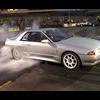r34 engine rebuild
Announcements
-
Similar Content
-
Latest Posts
-
By Dose Pipe Sutututu · Posted
You're making 27psi by 4200rpm, savage! Meanwhile I'm making 14psi lol. Very fun street setup, I bet the tyres want to turn to butter each time you cycle through the gears. I hope you have a proper LSD at the back, i.e. not the factory centre. Proof twin scroll is worth the effort/cost. -
By Dose Pipe Sutututu · Posted
The first part yes, the latter not really. If you do leave it at a shop, you'll need to make the changes via NSP. Happy to disclose how it's set up in private 😎 -
By soviet_merlin · Posted
Can it be enabled/disabled permanently through the Haltech keypad? As in there is disarming just to be able to start the car, but also disabling the immobiliser to leave it at a workshop for example.




Recommended Posts
Create an account or sign in to comment
You need to be a member in order to leave a comment
Create an account
Sign up for a new account in our community. It's easy!
Register a new accountSign in
Already have an account? Sign in here.
Sign In Now